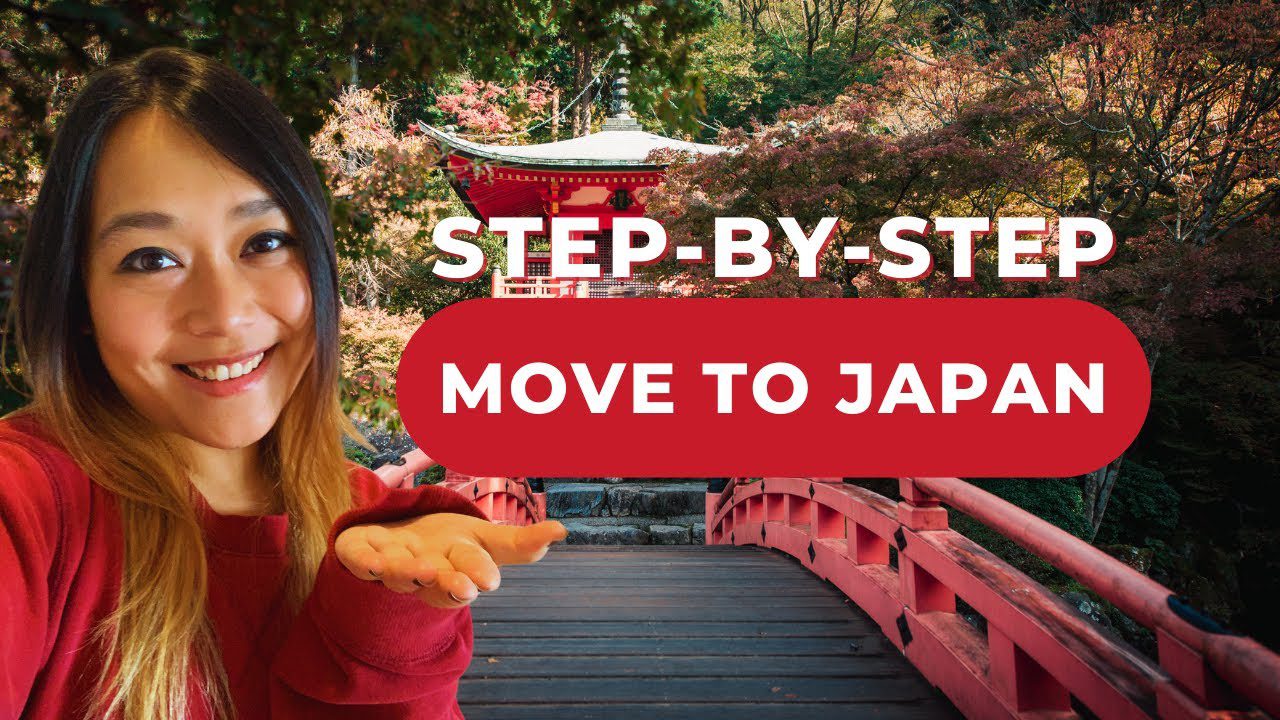Moving to Japan is an incredibly exciting prospect. Between delicious cuisine, beautiful destinations in nature, some of the world’s most interesting and modern cities, and captivating ancient culture, it’s no wonder so many people from around the world are choosing Japan for their retirement, careers, or just their next adventure.
Regardless of your reasons for relocation, moving to Japan can feel like a bear of a task to take on. Armed with the right information, however, you’ll be enjoying life on the Asian island in no time. This guide will walk you through everything you need to know about the process of moving to Japan.
Living in Japan stats:
- Money in Japan: Japanese yen (also written as JPY or ¥)
- Population: 127 million
- Capital: Tokyo
- Expat population: 2.23 million
- Official Language: Japanese
- Weather: Temperature, celsius
- Biggest cities: Tokyo, Osaka, Kyoto
- Average Salary: ¥9,670,615
Step 1: Figure Out The Legal Requirements to Move to Japan
Japan is one of a few countries where the visa process is largely identical regardless of whether you’re British, Australian, American, or from the EU. It’s also one of the most straightforward.
All you’ll need to do is to apply for the relevant visa, depending on your reason for staying in Japan, at the nearest Japanese Embassy or Consulate General in your home country. The documents that you should bring with you, are:
- Your passport
- Your visa application form
- A photograph
- A Certificate of Eligibility, both the original and one copy.
This process may seem almost too good to be true, but it’s the fourth item that’s difficult to obtain. The Japanese consulate describes the Certificate of Eligibility as:
A Certificate of Eligibility is issued before a visa application by a regional immigration authority under the jurisdiction of the Ministry of Justice as evidence that the foreign national meets the conditions for landing in Japan, including the requirements that the activity in which the foreign national wishes to engage in Japan at the time of the landing examination is not fraudulent and is an activity that comes under a status of residence (excluding Temporary Visitor Status) stipulated in the Immigration Control Act. (Application by a proxy in Japan is allowed).
If you’re a little lost, don’t worry. What all of that boils down to is that you’ll need a certified letter from a Japanese person– typically an employer– who guarantees to support you financially while you’re in Japan. As such, the requirements for staying in Japan are pretty comparable to a work visa in other countries.
When you want to study in Japan, the visa application procedure is the same, only the Certificate of Eligibility has to be provided by someone at the educational institution or university that you will be attending.
For some countries there are some additional requirements though, so make sure to check this with the embassy or on the website of the Ministry of Foreign Affairs of Japan, before you start the process.
Step 2: Make Sure you can Afford The Cost of Living in Japan
Finances in Japan vary a little, depending on whether you’re comfortable with immersing yourself in Japanese life or if you’ll be spending more time trying to get your hands on imported goods. As an island nation, anything that has to be shipped to the country tends to be astronomically expensive. The following table will give you an idea of some basic prices in Japan.
Cost of Living examples
- 3-course meal for two, mid-range restaurant – ¥4,000
- Monthly public transportation pass – ¥10,000
- New Toyota Corolla – ¥2,050,101
- 1-bedroom apartment in the city centre (monthly) – ¥81,609
- Pair of Nike running shoes – ¥8,051
Step 3: Set up Your Finances in Japan
Setting up your finances in Japan will feel pretty familial, in one of the world’s best banking systems. The only part that may seem a little foreign is the process of opening a bank account over a cup of tea and polite conversation.
If you’re planning to move existing funds to Japan from your bank account back home, one of the most important things to keep an eye on is the exchange rate your bank is offering. While many banks have significantly lowered their “fees” for these types of transactions, it’s common to mark up the exchange rate to see more of a prof Before you move your money, make sure to check on the reexchange rate with an online currency converter.
Would You Like To Apply For This Jobs/Sponsorship?
Enter Your Email Address HERE & You Will Receive a Notification About Your Application. If it shows "Subscribed" CLICK HERE to follow on Telegram for updatesIf you find your bank isn’t offering you a good rate, you can use Wise to ensure you get the mid-market rate and be charged smaller fees in the process. You can also set up a Transferwise borderless multi-currency account, which allows you to hold and manage money in 27 different currencies. You can convert between these currencies for a small fee whenever you need to, or when the rate is in your favour. If you already have a bank account in Japan, you can simply transfer your yen from your borderless account to your Japanese bank account. From early 2018 Wise will also offer a debit card connected to the borderless account, which will make it even easier to pay for your life in Japan.
Step 4: Find a Job and Get to Work in Japan
Finding a job in Japan can be difficult, as many companies choose to hire Japanese citizens. It’s also almost always required that you speak Japanese– English-speaking jobs are very rare. If you’re able to secure a position, however, this is the number one best way to get the Certificate of Eligibility that’s required for your visa.
If you’re looking for work in Japan, the following sites are a good place to start:
Step 5: Get a Place to Live in Japan
If you’re financially secure and have some Japanese speaking skills (or a translator), finding a Japanese apartment won’t be too difficult. While it’s possible– and common– to work directly with the landlord, first-time apartment-seekers may want to go through a real estate agent as they get a feel for neighbourhoods, rent prices, and what to expect from the apartment itself.
If you’re not sure where in Japan you’d like to settle down, the following are the top five cities to live in, according to quality of life and affordability:
- Fujisawa
- Inagi City (Tokyo)
- Nishinomiya
- Mitaka City (Tokyo)
- Matsuyama
Step 6: Make Sure your Healthcare is Covered in Japan
Healthcare in Japan is geared towards the people. While individuals are required to carry their health insurance, it is provided by a universal healthcare insurance system that guarantees mostly equal access to insurance and services, at a price laid out by the Japanese government.
For some special cases, like prenatal care, disease control, and screening exams, the government covers 70% of the cost of the treatment, with the individual being responsible for the other 30%. If you’re looking for a doctor in Japan, start with your new city’s local government website. Each city has their online database of local doctors and clinics.
Step 7: Learn the Language
Even though many Japanese people may know some English, Japanese culture is one in which knowing the language is key to fitting in and becoming part of life in the country. Getting started on your Japanese is easy through sites and apps like Duolingo, tofugu, and even freejapaneselessons.com.







It’s a pleasure to be in this site
Hello, Good evening sir, am looking for a job thare help thanks